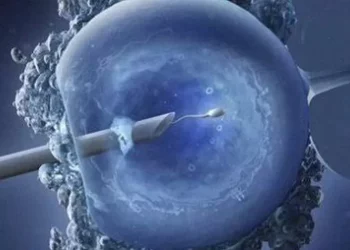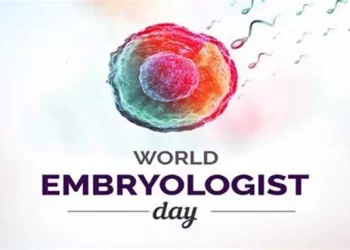Oligoasthenozoospermia is a condition that affects male fertility, characterized by low sperm count (oligospermia) and poor sperm motility (asthenozoospermia). This dual challenge significantly impacts the ability to conceive and requires careful management. In this article, we delve into the definition, causes, symptoms, diagnosis, treatment options, prognosis, prevention, and available support for individuals and couples navigating oligoasthenozoospermia.
Definition of Oligoasthenozoospermia
Oligoasthenozoospermia, often referred to as OAT syndrome, is a condition wherein men experience both reduced sperm count and poor sperm motility. Sperm count refers to the number of sperm present per milliliter of semen, while sperm motility refers to the ability of sperm to move effectively towards the egg for fertilization. When both parameters fall below normal levels, fertility can be significantly compromised.
Causes of Oligoasthenozoospermia
Various factors can contribute to the development of oligoasthenozoospermia:
1. Genetic Factors: Inherited conditions or genetic abnormalities can affect sperm production and function.
2. Hormonal Imbalances: Disruptions in hormone levels, such as testosterone or follicle-stimulating hormone (FSH), can impact sperm production.
3. Infections: Certain infections, such as sexually transmitted infections (STIs) or reproductive tract infections, can impair sperm health.
4. Lifestyle Factors: Unhealthy habits like smoking, excessive alcohol consumption, drug use, or obesity can negatively affect sperm quality.
5. Environmental Factors: Exposure to environmental toxins, pollutants, or radiation may harm sperm production.
6. Medical Conditions: Conditions like varicocele (enlarged veins within the scrotum) or obstructive azoospermia (blockage in the reproductive tract) can lead to oligoasthenozoospermia.
Symptoms of Oligoasthenozoospermia
Oligoasthenozoospermia often presents without overt symptoms. However, some men may experience:
1. Difficulty conceiving despite regular unprotected intercourse
2. Reduced fertility, as evidenced by unsuccessful attempts at conception
3. Abnormalities in semen analysis results, including low sperm count and poor motility
It’s important to note that these symptoms may not always be indicative of oligoasthenozoospermia, as other factors can contribute to fertility issues. Consulting a healthcare provider is essential for an accurate diagnosis.
Diagnosis of Oligoasthenozoospermia
Diagnosing oligoasthenozoospermia typically involves a comprehensive evaluation, with a focus on semen analysis. During a semen analysis, samples are collected and examined to assess sperm count, motility, and morphology (shape). A semen analysis provides crucial insights into sperm health and fertility potential.
Individuals concerned about fertility or experiencing difficulty conceiving should seek medical attention promptly. A healthcare provider can conduct a thorough assessment, including medical history review, physical examination, and diagnostic tests, to identify underlying causes of infertility.
Treatment Options for Oligoasthenozoospermia
Treatment for oligoasthenozoospermia aims to improve sperm quality and enhance fertility. Depending on the underlying causes and individual circumstances, treatment options may include:
1. Lifestyle Changes: Adopting a healthy lifestyle, including regular exercise, balanced nutrition, and avoiding harmful habits like smoking or excessive alcohol consumption, can positively impact sperm health.
2. Medications: Hormone therapy or antioxidant supplements may be prescribed to address hormonal imbalances or oxidative stress, which can affect sperm production and function.
3. Surgical Interventions: Procedures such as varicocelectomy (surgical repair of varicocele) or surgical correction of obstructive issues may be recommended to improve sperm quality.
4. Assisted Reproductive Techniques (ART): In cases where natural conception is challenging, ART procedures like intrauterine insemination (IUI) or in vitro fertilization (IVF) may be utilized to facilitate pregnancy.
Treatment plans are tailored to individual needs, with the goal of optimizing fertility outcomes while minimizing risks and complications. Open communication with healthcare providers is essential throughout the treatment process.
Prognosis and Outlook for Oligoasthenozoospermia
The prognosis for individuals with oligoasthenozoospermia varies depending on the underlying causes, severity of the condition, and response to treatment. While oligoasthenozoospermia can pose significant challenges to fertility, many cases can be successfully managed with appropriate interventions and lifestyle modifications.
With advancements in reproductive medicine and assisted reproductive technologies, individuals and couples facing oligoasthenozoospermia have access to a range of treatment options to fulfill their desire for parenthood. It’s important to approach treatment with realistic expectations and to seek support from healthcare providers and mental health professionals as needed.
Prevention of Oligoasthenozoospermia
While not all cases of oligoasthenozoospermia are preventable, adopting healthy lifestyle practices can promote optimal sperm health and reduce the risk of fertility issues. To reduce the likelihood of oligoasthenozoospermia:
1. Maintain a Healthy Lifestyle: Prioritize regular exercise, balanced nutrition, and weight management to support overall health and reproductive function.
2. Avoid Exposure to Toxins: Minimize exposure to environmental toxins, pollutants, and radiation, which can harm sperm quality.
3. Practice Safe Sex: Use barrier methods of contraception to prevent sexually transmitted infections, which can impact fertility.
4. Seek Timely Medical Care: Address any reproductive health concerns promptly by consulting healthcare providers specializing in fertility and reproductive medicine.
By taking proactive steps to safeguard reproductive health, individuals can optimize their chances of achieving and maintaining fertility.
Support and Resources for Oligoasthenozoospermia
Dealing with infertility, including oligoasthenozoospermia, can be emotionally challenging. However, support and resources are available to individuals and couples navigating this journey:
1. Counseling Services: Seek counseling or therapy to address emotional distress, anxiety, or depression associated with infertility.
2. Online Communities: Join online forums or support groups where individuals share experiences, offer advice, and provide mutual support.
3. Reputable Healthcare Providers: Consult experienced healthcare providers specializing in reproductive medicine and infertility treatment for comprehensive care and guidance.
Remember, you are not alone in your fertility journey. Reach out to trusted sources for support and guidance as you navigate the complexities of oligoasthenozoospermia and pursue your dream of parenthood.
Conclusion
In conclusion, oligoasthenozoospermia poses challenges to fertility but can be effectively managed with timely diagnosis, appropriate treatment, and supportive care. By understanding the causes, symptoms, diagnosis, treatment options, prognosis, prevention strategies, and available support resources, individuals and couples can make informed decisions and embark on their path to parenthood with confidence and resilience.
Related Topics:
A Comprehensive Guide: Is Oligospermia Curable?



























